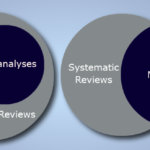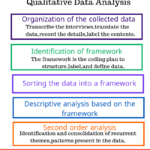Qualitative Data Collection
Qualitative data are non-numeric and descriptive. Qualitative research is generally concerned with providing meaning and context to a problem. Research inquires on a phenomenon collective subjective accounts from different participants to provide a reason or an explanation. The research questions are usually open-ended and exploratory. The process of research is expected to provide with an explanation. A careful understanding of the context, setting, participants and process is needed to carry out a qualitative research.

Hence, it can be said that data analysis in a qualitative study begins at the data gathering stage itself. Owing to the nature of the data collected, which are raw and descriptive, and the nature of the study itself, which is subjective and exploratory, the researcher must pay enough attention to the process of data collection and must record the setting where the process happens.
The common modes of data collection for a qualitative research include
Interviews, focus groups, and observations. There are also other forms of data collection for a qualitative research, besides these three, like action research, collection of data of journals, diaries, comments, etc. A brief overview of the big three methods of data collection for a qualitative research follows.
Interviews:
Interviews are the most common method of data collection in qualitative research. Researcher or their aide conduct interviews to various participants and ask them questions, related to the research question or in general about their experiences or views. Interviews provide for detailed and useful data collection. Often times, the interviews are conducted face to face and responses get audio/ video recorded. Sometimes, in case physical presence is not possible, video interviews or phone calls are done. Interviews also facilitate recording certain idiosyncrasies of the participants that may provide certain context in certain researches.
Focus groups:
A group of participants, usually around half a dozen to a dozen people, are asked to talk about issues related to the research question by a moderator (often times, is the co-researcher). This method is effective as most people tend to overshare when talking among other people who have gone through similar/same experience. This method of data collection results in a free flowing discussion among the participants and is an efficient data collection strategy as many people share their experience and views together; in general, a time-saving and efficacious method.
Observations:
Observing participants and non-participants in a given setting accounts for a valuable form of data collection technique in qualitative research. Observations provide the researchers the chance to notice different important details valuable to qualitative research; helps researchers notice both verbal and non-verbal communications, the interaction between different persons, and other environmental factors within a given setting. This unmediated, direct observation helps the researcher understand certain traits inherent to social interactions that may help for certain researches. The researcher usually records what happens in a setting, taking field notes of his own impression of what’s happening and a general account of the activities going on that will provide a chronology for the events and come in handy during the analysis phase.
Besides these three methods, there are many other methods of qualitative data collection but these form the essential methods in most studies.



 Previous Post
Previous Post Next Post
Next Post